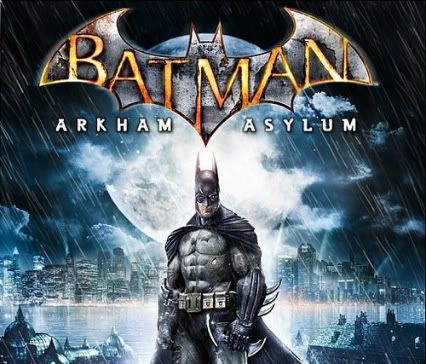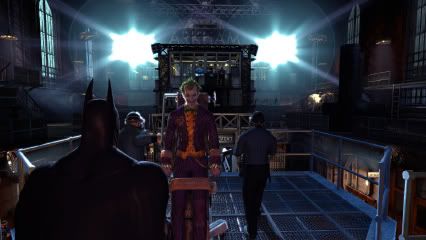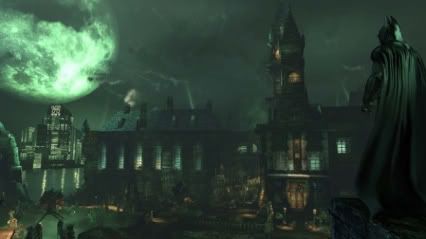There’s little denying that Batman: Arkham Asylum is a quality product that provides plenty of value for your dollar. The game boasts visual polish, great voice acting, a varied and lengthy campaign, and an abundance of extras that offer several more hours of gameplay. If this were a standard review, the overall package would come highly recommended.
But Arkham Asylum is such an amazing product that it demands a deeper level of analysis. As a game both critically praised and abundantly purchased, it’s bound to be an influence on future game design. So as important as it is to praise its accomplishments, it’s equally important to see where it could be improved.
This was something that I had a hard time reconciling with. As I played Arkham Asylum, I knew what I was doing was fun and enjoyable, but I never felt that the game was truly living up to its potential. Here’s why:
Batman as an Avatar
On the surface, the Batman of Arkham Asylum is one-dimensional – he has a one track mind, and he repeats something along the lines of, “this ends tonight,” or, “I’m putting a stop to this,” every half hour or so. Topped off with his muscle-bound character design, he comes off as little more than a big, dumb oaf.
But really, Arkham Asylum’s bare bones take on Batman is worse than poorly written lines – it’s a deliberate attempt to turn the Dark Knight into an empty shell. He’s an avatar similar to the stars of many first-person shooters. And that’s a problem because this is a third-person game and Batman is a well-defined and unique superhero.
His flat reactions to events like Scarecrow’s hallucinations and a flashback to his parents death suggest that it’s up to the player to empathize with their avatar. But his lack of emotion in this case just dissolves the emotional impact of the scene, leaving you with an ultimately forgettable experience.
How to Improve: Make Batman a full-fledged character. One of the best parts about the comics is that Batman is eccentric and a bit insane. His enemies constantly remind him of this and the Joker is one of the biggest offenders. If Joker had toyed with Batman and actually gotten a reaction, he’d suddenly seem like a much more realistic character.
Obviously, there are a lot of ways to make Batman more three-dimensional and that’s just one example, but characters that show some sign of weakness are almost always more interesting.
Not Your Daddy’s Metroid
Arkham Asylum offers open-world exploration with hidden areas accessed by an ever-increasing repertoire of gadgets. You’re able to backtrack into old zones and blow up weakened walls or zip-line across bottomless pits. It’s a style highly reminiscent of Metroid or Castlevania, but with one problem: the objects of desire are not tangible upgrades, but rather empty collectibles in the form of Riddler trophies.
Substantial upgrades aren’t earned through anything resembling exploration and experimentation, but rather the natural flow of the story. Each time you receive a new gadget it’s because Batman had it all along but didn’t tell you for some reason. And so you never have that, “A-HA!” moment of realization and excitement to go explore further, because the exploration is mostly extraneous.
Any time you go off the beaten path in Batman you actually bring tangible progression to a grinding halt. Riddler’s challenges are little more than a way to pad out the length of the game and earn achievement points.
Sure, there are audio logs and riddles related to each villain, but those are the exception. They smartly reward exploration with greater insight into the villain’s motivations and the world of Arkham Asylum itself. But in general, those more meatier rewards are hidden in plain sight, whereas your gadgets get far more use revealing useless trophies hidden behind false walls.
How to improve: Take a page from Shadow Complex, or go back even further to the games that inspired it like Super Metroid or Castlevania: Symphony of the Night. Make hidden items desirable and useful. Make backtracking exciting by using new equipment to reveal larger hidden areas, not just false walls or dead-end vents. Most of all, reward exploration with unique tools that can be missed and make later parts of the game easier or more dynamic.
The Secret of the Ooze
Developer Rocksteady seems to take many cues from Bioshock, but forgot to include a compelling plot. Forget for a moment the cool audio logs, the asylum itself, and the wealth of fantastic voice acting, and focus on the conflict itself. Does it seem a little familiar? It’s pretty much the plot from the second Ninja Turtles movie, complete with Super Shredder finale.
Arkham Asylum doesn’t go far beyond the plot of a Saturday morning cartoon. It’s upsetting because you have a fleshed-out setting and fleshed-out characters (villains anyway), but the interactions and conflicts between them are clichéd and boring.
How to Improve: Take a page from the better Batman comics. There’s enough dark, deep stories in the last few decades worth of Batman comics to make ten games.
Play up the relationships between the characters. The Batman franchise is unique in that it is popular for its deep, dynamic relationships between heroes and villains. If that’s not a ripe fruit for a game plot than I don’t know what is.
I am Batman, I am Clumsy
Batman is painted as the stoic, perfect hero in Arkham Asylum. Why then, is he constantly foiled by tiny obstructions? One moment he goes head-to-head with Bane, and the next he’s incapable of brushing past a door threshold. Yeah, this is a bit nit-picky, but these collision detection issues really deflated my suspension of disbelief.
Then there’s the combat, which has you stringing together attacks in a free-flow flurry that increases your attack strength. It’s cool, until Batman inexplicably throws a blind punch and you’re reset back to normal strength. It makes almost every punch a gamble between launching at the next enemy for an instant knock out or punching the air and gimping yourself.
How to Improve: It seems obvious enough. Again, these are both nitpicks compared to the bigger issues we’ve explored, but they often make Batman look ridiculous. His stoic attitude combined with these awkward moments make for an uncharacteristic adaptation of the masked hero. He’s supposed to be the perfect hero and the flawed human, instead he’s the complete opposite.
At the End of the Day…
Batman is a pretty good game. But it’s not perfect – it dabbles in a lot of gameplay styles but never fully commits to any of them. The result is a game that’s satisfying, but not terribly complicated or stimulating. Success means sequels though, and with any luck the next game will have a little more to sink your teeth into.






















Comments